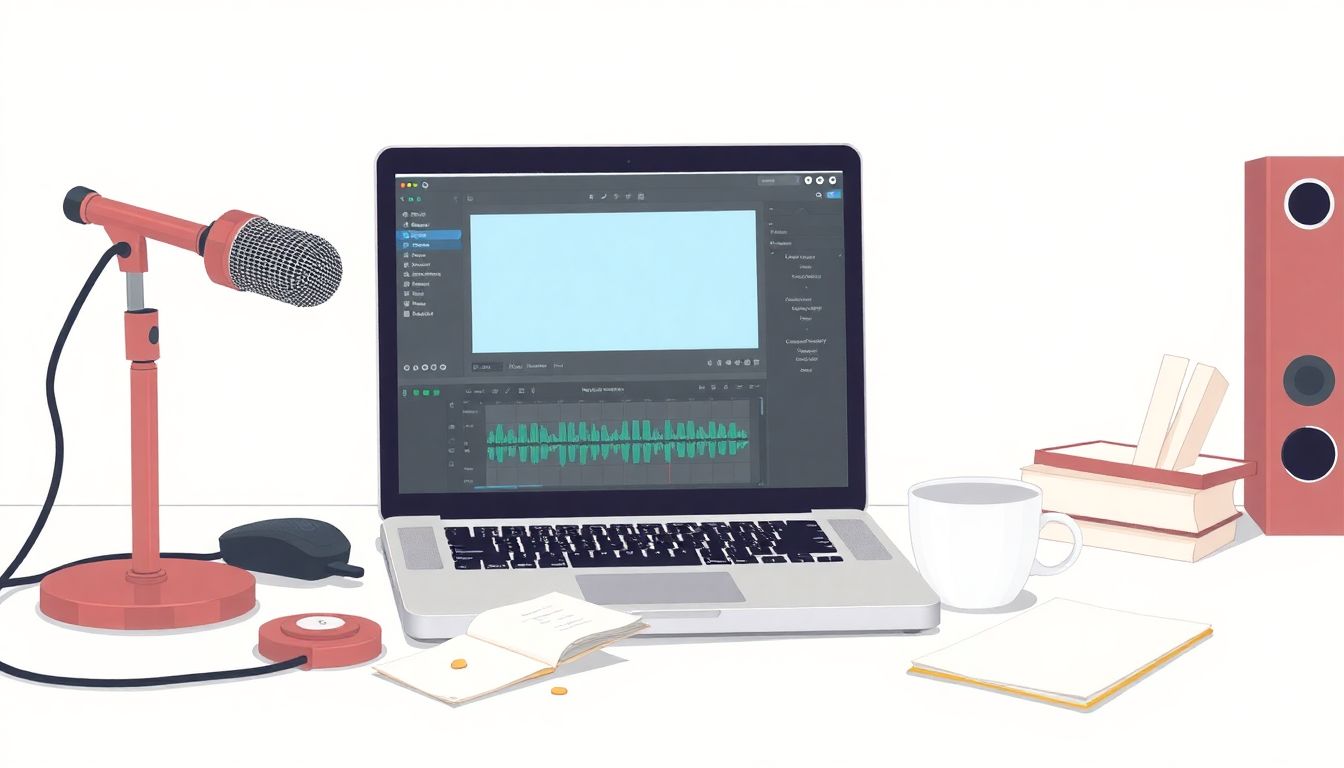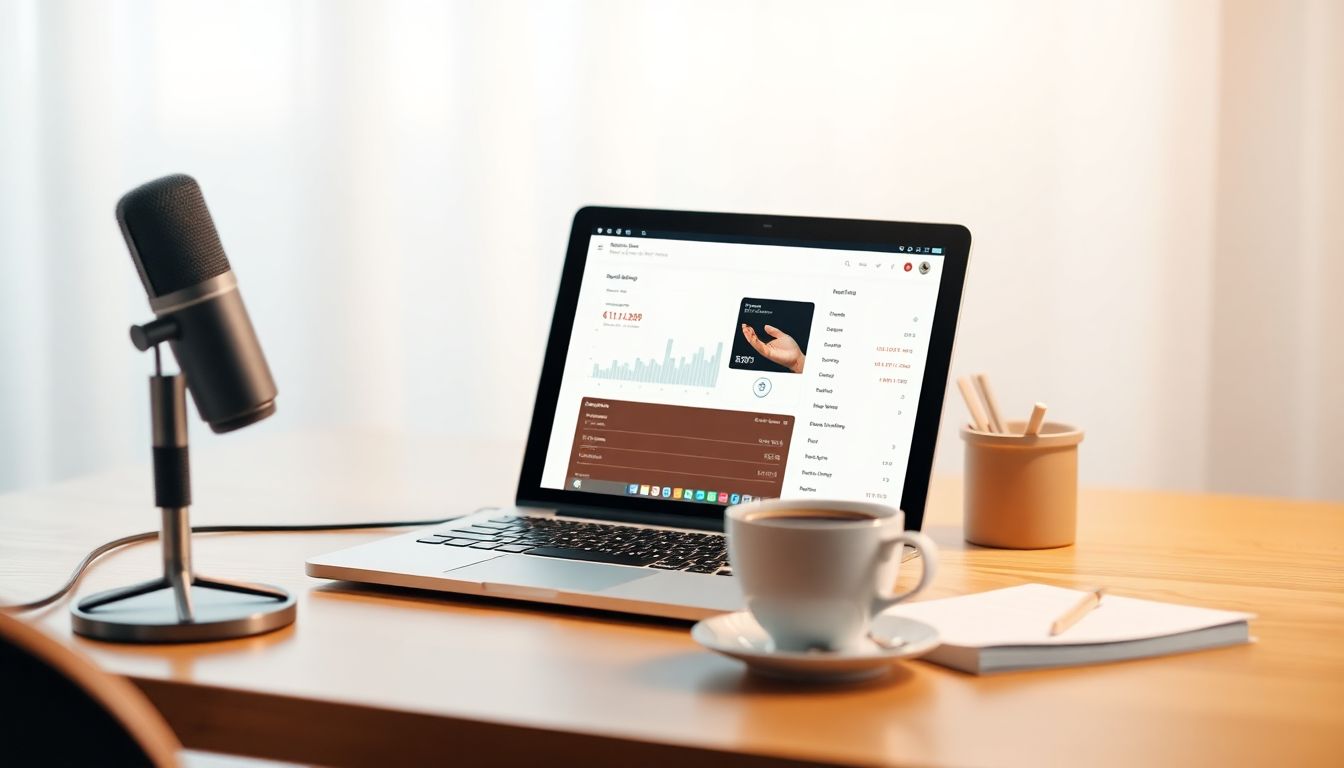Getting your audiobook out into the world can feel a bit tricky—especially when you’ve got that awesome recording sitting idly on your computer, and you’re not quite sure how to sell it. I totally get it; distribution can seem confusing at first.
Here’s the good news: it’s actually way simpler than you think! Stick with me, and I’ll walk you through each stage, from picking the right platform to tracking your sales afterward—no headaches, promise.
Ready? Let’s jump right in!
Key Takeaways
- Pick an audiobook distributor (Audible, ACX, Findaway Voices) based on your target audience and royalties.
- Prepare audio files and metadata according to platform specifications to avoid delays or rejection.
- Create an account, keeping banking and tax information handy to simplify the process.
- Upload clearly labeled audiobook files carefully, allowing uploads to finish fully before proceeding.
- Price your audiobook realistically by researching similar titles and testing promotional discounts occasionally.
- Decide between exclusive distribution for higher royalties or non-exclusive for wider audience reach.
- Publish your audiobook carefully after reviewing audio quality and metadata.
- Consider additional platforms or direct sales on your website for increased control.
- Promote your audiobook actively through social media snippets, targeted advertisements, and creative giveaways.
- Use sales data analytics regularly to adjust strategy for better results.

Step 1: Choose an Audiobook Distribution Platform
The first step in getting your audiobook out there is picking the right platform. No worries if you’re feeling overwhelmed, everyone does at first—there are tons of choices. Audible, Google Play Books, and Apple Books are some of the big players. But distribution services like ACX and Findaway Voices are popular because they’re easy to use and cover lots of platforms at once.
Here’s a quick tip: if your audiobook is mainly fiction—which accounts for more than 65% of audiobook sales worldwide—you might lean toward a platform like Audible, which has a big fiction-loving audience. Nonfiction titles are rising fast too (about 27.5% growth annually), so don’t count them out. Consider your genre and audience carefully.
Also, think about royalties! Audible offers up to 75% royalties with their exclusive distribution program, Audible Originals. Compare your options and see what’s most profitable for you.
Step 2: Prepare Your Audiobook Files for Distribution
Before uploading your audiobook, make sure your files meet the specific technical guidelines set by your chosen distribution platform. Skip this step and you’ll end up frustrated with delays—trust me on this one.
Audible/ACX, for example, wants MP3 files with consistent audio levels between -23 dB and -18 dB RMS and no background noise. Stick closely to these requirements to avoid rejection or delays. Tools like Audacity can help you prepare your audio files easily.
Double-check your metadata—title, narrator name, genre tags, cover images (usually square, 2400×2400 pixels), and descriptions. If metadata makes your head spin, check out these tips on how to title a book effectively or explore the best fonts for designing attractive book covers. That extra effort pays off by making your audiobook more appealing.
Step 3: Create an Account on Your Selected Distributor
Once your audiobook files are in tip-top shape, the next step is creating an account with your chosen audiobook distributor. All of these platforms make it straightforward: just head over to their site, fill out the forms, and confirm your details.
But here’s a useful heads-up: keep important details ready—such as your banking info for royalty payments, tax information, and your author or publisher bio ready to copy-paste. It saves you valuable time in the account creation process. If crafting a good bio feels like your worst nightmare, check these examples of short author bios for inspiration.
Quick note: Some platforms require verifier steps like phone or email confirmations. Do those promptly, so you can move smoothly into the exciting part—uploading your audiobook.

Step 4: Upload Your Audiobook Files to the Distributor
Uploading your audiobook is straightforward, but you need to pay attention to each step to avoid setbacks.
You’ll typically see a dashboard with clear buttons to upload individual chapters or the entire book in one go—just make sure files are correctly labeled by chapter numbers to avoid mix-ups.
Most distributors like Findaway Voices or ACX let you upload directly through your browser, but larger files may take a bit longer, so patience is needed.
A quick tip: always wait until the upload fully completes before navigating away—nothing worse than realizing later chapters didn’t upload correctly when you’re trying to publish your audiobook on time.
Step 5: Set the Price and Availability of Your Audiobook
Pricing your audiobook isn’t rocket science, but it does call for careful strategy—especially considering the market trends right now.
You can typically control your price or allow platforms to set it based on length, but here’s my suggestion—do some homework and check similar audiobooks in your genre.
With audiobook sales expected to reach between USD 17.18 billion to USD 35.47 billion by 2030, pegging your price wisely is key to capturing a good share of this growing market.
Think about offering promotional discounts and experimenting with pricing models periodically to see what hits that sweet spot between affordability and profitability.
Step 6: Choose Between Exclusive and Non-Exclusive Distribution
Wondering if exclusive distribution deals are a good move? Well, it depends.
Exclusive distribution means you can only sell through one platform—like Audible—and often scores you higher royalties (up to 75% of your price).
Meanwhile, non-exclusive deals let you distribute everywhere, from Audible to Spotify, potentially boosting your audiobook audience but generally offering lower royalties per sale.
Given that platforms like Spotify now offer audiobooks across countries like the US, UK, Canada, New Zealand, Ireland, and Australia, going non-exclusive might give your audiobook more visibility worldwide.
Consider your audience and your marketing capabilities—exclusive is simpler with potentially higher royalties, whereas non-exclusive lets you reach wider audiences through multiple platforms.
Step 7: Review and Publish Your Audiobook
You’ve got everything uploaded and priced—easy to rush through, but slow down here and do a careful review.
Most distributors provide a preview or sample to check how your audiobook sounds to buyers—verify that the narration sounds polished, with no annoying pops or noises.
Verify your book description, author/narrator bios, and metadata again—these are crucial for discoverability.
When you’re confident everything looks perfect, submit it and celebrate—you’ve successfully published an audiobook!
Step 8: Distribute Directly to Additional Platforms
Distribution services are awesome, but nothing prevents you from tackling additional platforms directly to boost overall sales.
Many authors directly upload audiobooks to their own websites, offering audiobook downloads as premium products—this allows full control over pricing and user engagement.
You might also consider specialized audiobook services or foreign markets, especially since Europe’s audiobook consumption is growing by about 18.6% annually until 2025, and Asia-Pacific is set to explode in popularity as smartphone use skyrockets.
The direct approach requires more management, but gives you greater flexibility and control over distribution.
Step 9: Market Your Audiobook for Increased Sales
If simply uploading meant instant sales, every audiobook would be a bestseller. Unfortunately, marketing your audiobook effectively is essential to stand out.
Share engaging snippets and excerpts on social media or your author website—teasers increase curiosity and drive potential customers towards a purchase.
Another powerful way to market your audiobook is to run ads targeting audiobook listeners, or offer freebies like short stories or related content to build loyalty and grow your email list.
Don’t overlook creative promotions, giveaways, or contests either—these methods effectively attract new listeners and boost audiobook visibility, and you might get inspired with fresh marketing efforts by exploring some realistic fiction writing prompts for targeted storytelling.
Step 10: Track Sales Performance and Adjust Your Strategy
The reality check after uploading and marketing your audiobook comes in tracking your performance—I know, numbers aren’t everyone’s favorite thing, but trust me, they’re crucial.
Platforms offer analytics dashboards to help you keep track of sales numbers, listener behaviors, and ratings; these metrics show what’s working and what’s not so hot.
Maybe listeners drop off after chapter five—consider improving narration quality there, or maybe you’re seeing lots of action in European markets, prompting you to adjust promotion strategies toward that region.
Keep learning, adapting, and tweaking, because the difference between average audiobook sales and consistent bestseller success often relies on analyzing your results and taking strategic action.
For those looking to expand beyond audiobooks, getting into print could also boost your presence—check out this helpful guide on how to get a book published without an agent, and consider if branching into other formats boosts your sales strategy.
FAQs
Select exclusive distribution if you prefer higher royalty rates but distribution only to one platform (such as Audible). Choose non-exclusive if reaching a broader audience across multiple platforms matters more, despite slightly lower royalty percentages.
Most audiobook distribution platforms accept files in MP3 format, with specific quality standards, such as 192kbps or higher. Some platforms may also accept WAV or FLAC, but it’s best to confirm the accepted formats directly with your chosen service.
Direct distribution offers greater control and potentially higher revenue, but requires more management from you. Using a third-party distributor reduces workload and can expand your audiobook’s reach, but typically involves sharing a portion of royalties.
Market your audiobook by leveraging author platforms, building an email subscriber list, reaching out to audiobook reviewers, engaging on social media channels, and using targeted advertising. Regular promotions and listener engagement boost visibility and sales.
